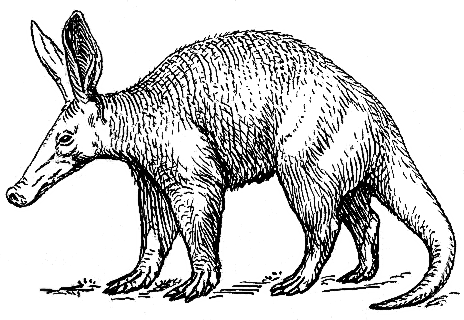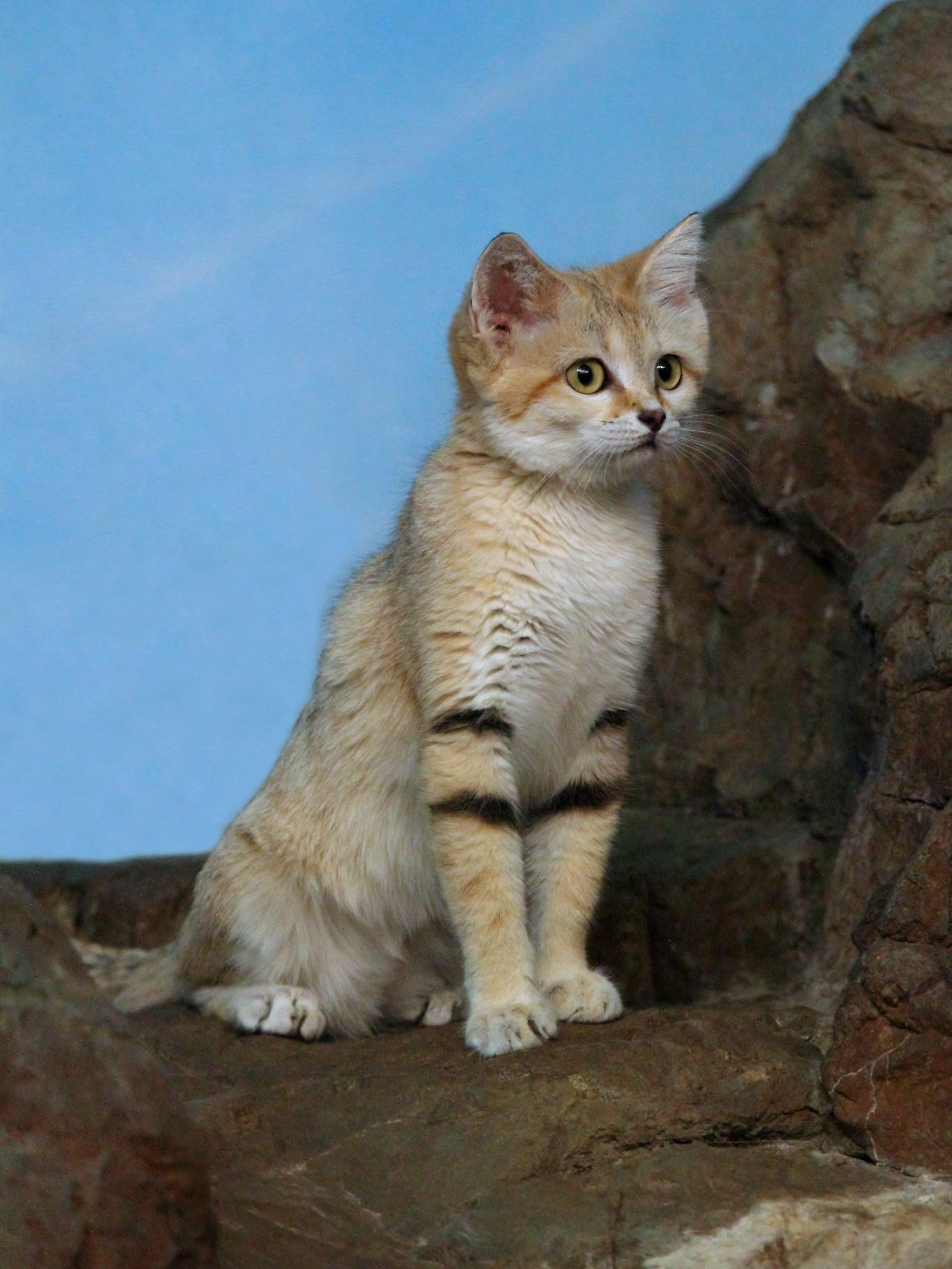The wildlife of Egypt has a variety for different plants and animals. Most of Egypt's landscape is desert, with a few scattered waterholes. There are approximately 100 mammal species found in Egypt, many of them are threatened and endangered. There's approximately 106 reptile and amphibian species. There are 36 differnet types of snakes found in Egypt. 49 lizard species that make Egypt their home.
Some examples are:
*Aardvark
*Sand Cat
* Nile Crocodile
*Cerastes cerastes
* Pallid gerbil
Aardvark
By Pearson Scott Foresman [Public domain], via Wikimedia Commons
Aardvarks are native to Africa and it is in the afrotherian mammals.They are medium-sized, they can be up to 88-140 lbs, and they can be up to 3.3-4.3 ft when adults. Aardvarks can live up to 23 years. They are carnivores which means they eat meat. Aardvarks eat termites. They move from one termite mound to another. The insects/bugs get trapped by the long tongue, the tongues can be as long as 12 inches. It's covered with think and sticky saliva.
Click here to read more about Aardvarks
Sand Cat
By Greg Hume (Own work) [CC BY-SA 3.0 (http://creativecommons.org/licenses/by-sa/3.0)], via Wikimedia Commons
Sand cat's are also known as the sand dune cat. They're the only cat living primarily in deserts. This small cat is in the deserts of North Africa, the Middle East, and Central Asia. They may be cute but they are vicious. The sand cat has a bite force of 133.1, that is the highest of all cats. Sand cats can also run as fast as 25 mph. Sand cats are carnivors; they eat small rodents such as insects, reptiles, desert snakes and birds. They tend to live on their own unless they want to find a mate to have kittens with.
Click here to read more about Sand cats
Nile Crocodile
By Photo by Derek Ramsey (Ram-Man) (Own work) [GFDL 1.2 (http://www.gnu.org/licenses/old-licenses/fdl-1.2.html)
The Nile crocodile is an African crocodile. When an adult is can be up to 500 – 1,200 lbs, the length as an adult for male is 14 ft. and for women 7.9-12 ft., and the lifespan of an nile crocodlie is 70-100 year. It has a long, powerful tail, webbed hind feet, and long powerful jaws; it's suited for grabbing and holding onto prey. It's mainly eats fish, but it will attack almost anything that crosses it's path. That including zebras, small hippos, porcupines, and even other crocodiles.
Click here to read more about the Nile crocodiles
Cerastes cerastes
By derivative work: Victorrocha (talk) Crotalus_cerastes_mesquite_springs_CA.JPG: Tigerhawkvok (Crotalus_cerastes_mesquite_springs_CA.JPG) [CC BY-SA 3.0 (http://creativecommons.org/licenses/by-sa/3.0)
Cerastes cerastes is a venomous viper species native to the deserts of Northern Africa and parts of the Middle East. The desert horned viper is what this snake is known for being called. The average length for the horned viper is about 12 to 24 inches. These snakes have a strong and healthy body, narrow neck, and tapering tail. This snake, like most snakes eats meat.
Click here to read more about the desert horned viper
Pallid Gerbil
By Perpallidus.jpg: XV8-Crisis (Perpallidus.jpg) [FAL, GFDL (http://www.gnu.org/copyleft/fdl.html)
The pale gerbil is native to Egypt and is distributed mainly in the northwestern part of the country. It is also known as the pallid gerbil. The pale gerbil has pale orange fur, with white underparts, white forelimbs and white feet.
Click here to read more about tha pale gerbil






